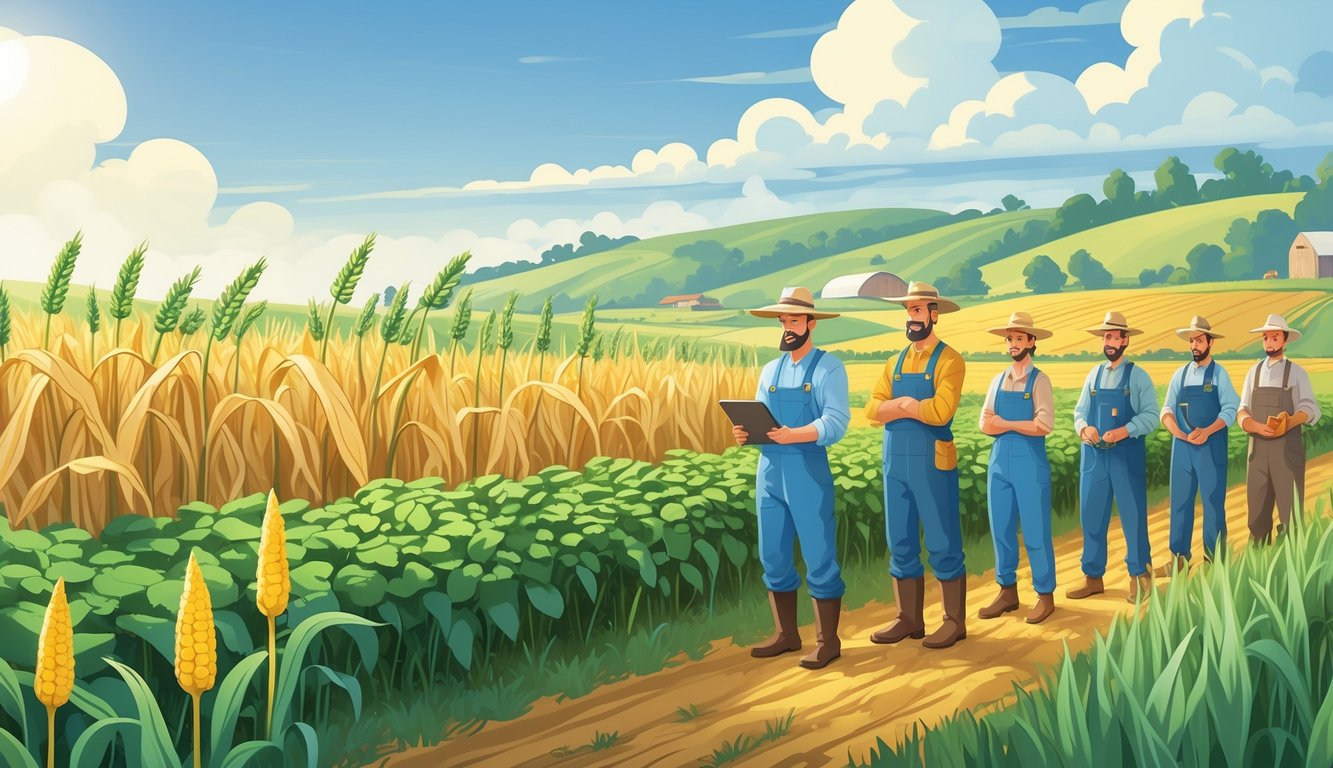
Yield Penalty and Growth-Defense Trade-Off
Let’s just get this out there: this whole topic drives me nuts. Every season, I stare at the yield numbers—sure, resistance to blight or mildew keeps you from total disaster, but nobody’s bragging about bumper crops from those lines. Seriously, why does every “disease-resistant” variety feel like it’s on a diet? Growth-defense trade-off, they call it. Plants have to pick sides: defend or produce. No free lunch. That’s not just some theory—here’s a study mapping how resistance and yield scrap it out, and yeah, the tug-of-war is ugly.
Nature doesn’t care about our spreadsheets. Toss in a weird year—heat, dry spells, or whatever new fungus is trending—and your “super-resistant” plants suddenly look puny, all because they’re busy fighting off invisible enemies. So, you hedge your bets with hybrids, hoping for a miracle, but every agronomist I know just sighs and mutters about trade-offs. It’s like swapping your old sneakers for waterproof boots and realizing you miss the blisters.
No chart solves weather chaos. The more you soup up resistance, the more you risk losing out on yield when the weather actually plays nice. Does anyone else regret betting on one trait? Because I do—about every third harvest.
Fostering Sustainable Practices with Disease-Resistant Crops
I’ll admit, there’s something pretty satisfying about watching blight shrivel up and knowing I won’t be hosing the field with chemicals next spring. Also: way fewer frantic texts from neighbors who never rotate anything. Are disease-resistant crops a magic bullet? Not even close. They’re more like a half-rusted Swiss Army knife you’re just glad to have when things go sideways.
Crop Rotations and Integrated Pest Management
My cousin decided to run a one-variety corn marathon a few years back—total faceplant. Monoculture’s basically asking for trouble. When disease comes calling, it wipes out everything. Crop rotation isn’t just some old-timer’s bedtime story; it actually keeps pathogens from getting too comfortable.
Swapping in disease-resistant soybeans one year? The next, fungal problems are suddenly less of a horror show—although, let’s be real, the weeds never take a day off. But rotating resistant varieties and using integrated pest management (IPM) means I’m not dumping fungicides everywhere, which only seems to make the bugs stronger anyway.
Sometimes, the IPM checklist is longer than my last grocery run. Field scouting, row checks at dawn, inviting in predators (the non-dog kind)—it adds up. But mash it all together: resistant seeds, rotations, fewer chemicals, more time in the field? Yields don’t swing as wildly, and “sustainable” doesn’t sound so pie-in-the-sky. Extension folks throw out numbers—20% less disease, more money, less residue. I used to roll my eyes, but my own records back them up.
Contributions to Biodiversity
I figured disease resistance would just make my fields more boring, but nope—nature has other plans. Lay off the fungicides, and suddenly, there are bees where I haven’t seen bees in ages. That’s the kind of side effect nobody puts in the brochures, but sustainable agriculture sneaks up and actually makes things wilder.
My agronomist, who hates anything that sounds like a TED Talk, keeps reminding me: every pest you dodge helps real biodiversity, not just the stuff in textbooks. The field edges get thicker, fewer dead spots, more weird little habitats, and the helpful bugs don’t bail. I didn’t have some “biodiversity awakening”—it just crept in, thanks to disease-resistant crops.
Sometimes I wonder if all the wild lettuce in my wheat is a sign of “health” or just me slacking off. Still, it’s real: manage things right, and these resilient ecosystems actually help with food security and pest control. Plus, fewer surprise bills at season’s end.
Breeding for the Future: Research and Development Trends
I can’t keep up with all the acronyms—MAS, QTL, GS, whatever. Breeders obsess over “durable” versus “field” resistance like it’s fantasy football, and honestly, I can’t tell if any of it matters until I see a yield bump.
Advances in Marker-Assisted Selection (MAS)
Way before I learned what a QTL was, researchers were already betting on MAS—DNA markers waving flags in the genetic fog. One breeder told me, “Gene pyramiding is tedious, but it beats rolling dice with wild crosses.” They stack traits for things like late blight in potatoes or blast in rice, and suddenly, you’re skipping half the maze.
The jargon’s a mess—tables full of abbreviations, but it works. Nature Genetics says stacking three resistance genes can cut screening time by 40%. That’s more time for breeders to argue about which method is better. Check out A new roadmap for the breeding of disease-resistant and high-yield crops if you want to see how MAS tweaks that yield-disease balance, but good luck finding out how many pots of coffee it took.
Future Directions in Biotechnology
CRISPR, RNAi, calcium sensors—pick your poison. Nobody’s nostalgic for Mendel’s peas when you can drop in broad-spectrum resistance and confuse everyone about which gene did what. Biotech companies pitch direct gene editing for both broad and narrow immunity, and the patent mess gives me a headache. Still, a single SNP tweak in ROD1 made a field more resistant without tanking yield, according to this PMC article.
Nobody brags about the paperwork, but I’d bet half my seed stash that calcium-sensor stuff is about to become a legal battlefield. Genomic selection still trails MAS for some crops, but with more genomes sequenced, stacking resistance is just another Tuesday. Next time someone insists “GMO-free” will last forever, ask them how they’ll keep up with pathogens—then watch the conversation die.